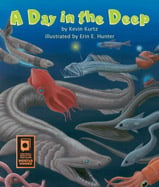Alignment to Standards for WA

| Grade | Number | Standard |
|---|---|---|
| 2,3 | 2-3 LS2A | Ecosystems support all life on the planet, including human life, by providing food, fresh water, and breathable air. |
| 2,3 | 2-3 LS3A | There are variations among the same kinds of plants and animals. |
| 4,5 | 4-5 LS1B | Plants and animals have different structures and behaviors that serve different functions. |
| 4,5 | 4-5 LS1C | Certain structures and behaviors enable plants and animals to respond to changes in their environment. |
| 4,5 | 4-5 LS1D | Plants and animals have structures and behaviors that respond to internal needs. |
| 4,5 | 4-5 LS2A | An ecosystem includes all of the populations of living organisms and nonliving physical factors in a given area. Living organisms depend on one another and the nonliving physical factors in their ecosystem to help them survive. |
| K,1 | K-1 LS1B | All plants and animals have various external parts. |
| K,1 | K-1 LS1D | Different animals use their body parts in different ways to see, hear, grasp objects, and move from place to place. |
| K,1 | K-1 LS1E | Animals have various ways of obtaining food and water. Nearly all animals drink water or eat foods that contain water. |
| K,1 | K-1 LS2A | There are different kinds of natural areas, or habitats, where many different plants and animals live together. |
| K,1 | K-1 LS2B | A habitat supports the growth of many different plants and animals by meeting their basic needs of food, water, and shelter. |
| K,1 | K-1 LS3B | There are many different types of living things on Earth. Many of them are classified as plants or animals. |